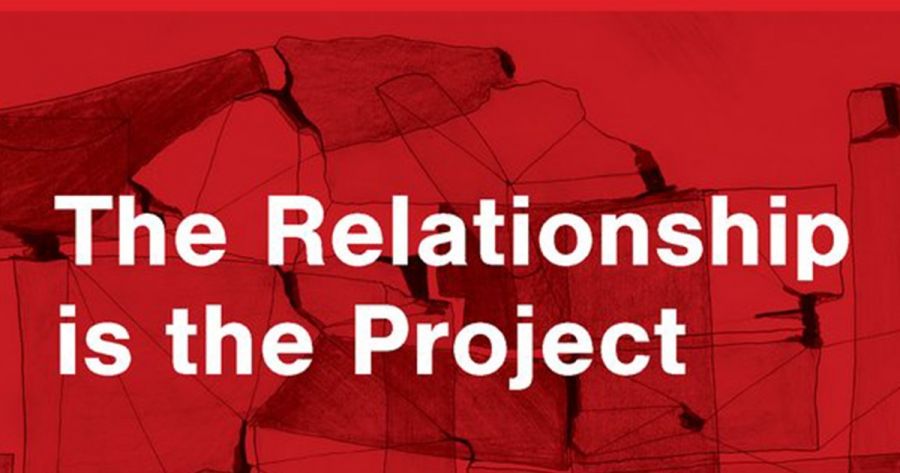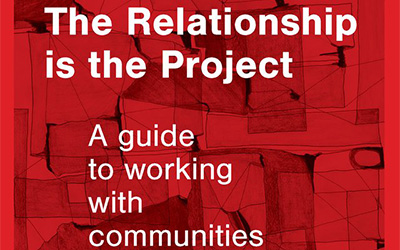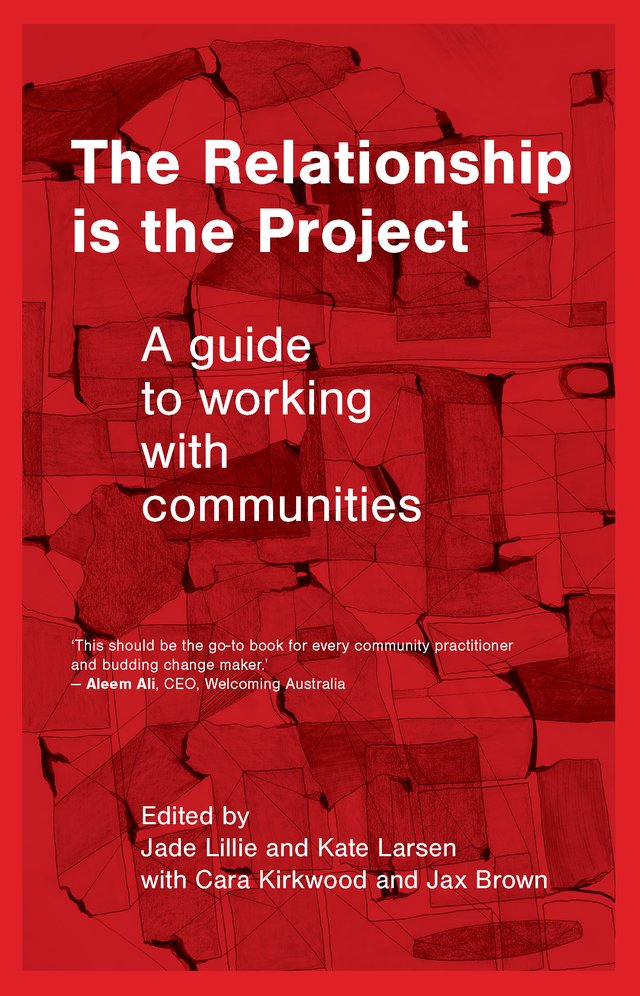
- Free Article: No
- Contents Category: Society
- Review Article: Yes
- Article Title: Difficult questions
- Article Subtitle: An iterative collaboration
- Online Only: No
- Custom Highlight Text:
The Relationship Is the Project is a guidebook to working with communities. The work explicitly asks the reader to consider not only how art is created but from where that art comes – and it so often comes from community.
- Featured Image (400px * 250px):

- Alt Tag (Featured Image): Astrid Edwards reviews ‘The Relationship Is the Project: A guide to working with communities’ edited by Jade Lillie and Kate Larsen with Cara Kirkwood and Jax Brown
- Book 1 Title: The Relationship Is the Project
- Book 1 Subtitle: A guide to working with communities
- Book 1 Biblio: NewSouth, $34.99 pb, 287 pp
- Book 1 Cover Small (400 x 600):

- Book 1 Cover (800 x 1200):

Let us start with the purpose: to provide a foundation as to how organisations work with communities, and to consider how effective that work may be for the storytelling and publishing industries. If you read literary reviews, you are likely to have thoughts on not only books and literature but also the broader ecosystem from which books and literature spring – in other words, our literary, cultural, and arts spaces. The Relationship Is the Project, a collective work with more than forty contributors, is designed to prompt questions about those spaces and suggest best practice for how those spaces work.
Viewed through the lens of literature and literary institutions, its purpose is to make visible the difficult questions around cultural gatekeeping and suggest ways of navigating them. These questions are asked at the individual level and the institutional level. For example, a legitimate question is whether I am an appropriate reviewer for this work. The act of my writing this tells you that I think I am, but the book asks us all to interrogate that choice, as well as the processes behind that choice which led Australian Book Review to commission this review.
Writing and ideas are not created in a vacuum. The Relationship prompts questions to consider when we consume art or when we are working with people who create art. Was the writing driven by lived experience? Were the pathways to publication fraught, and how can they be improved? Who were the gatekeepers and who was left out? Who edited the work and was that done with appropriate cultural competency or from relevant lived experience? Is the creator being supported after publication and, if so, for how long?
Moving from the individual to the organisation viewpoint, The Relationship outlines a series of strong prompts for organisations to interrogate their own actions and evaluate the status quo they uphold. These prompts include discussion on public and philanthropic funding, and not only how this affects the bottom line of an organisation, but also how it may constrain the extent to which an organisation can fulfil its stated mission. The work suggests ways for leadership to consider how the supporters and stakeholders of an organisation – ticket purchasers, donors, or those who engage on social media – perceive funding and how this alters the extent to which they may continue to support the organisation.
In 2024, the chapters on duty of care are particularly relevant. Of course, management and boards have a duty of care to the staff in and the artists who work with those organisations, but too often what this duty of care means is not articulated. The Relationship raises pointed queries about the material state of employment and pay, but it also considers the safety of those individuals experience when in, or profiled by, the organisation. Think of the duty of care writers’ festivals have to authors exposed on stage or the duty of care publications have to reviewers who are attacked for critiquing a work harshly.
This is the second iteration of The Relationship. Original contributions have been updated and an additional twelve essays included. This new edition includes, for the first time, essays on class (Nina Ross, Lizzy Sampson, and Jessie Scott) and online communities (Seb Chan), as well as adaptation to the climate crisis through relationality (Jen Rae and Claire G. Coleman), art and climate justice (Karrina Nolan and Alex Kelly), and creative practice and disaster recovery (Scotia Monkivitch).
There are too many contributors to list, but they include Esther Anatolitis, Claire G. Coleman, and Eleanor Jackson. This poses a challenge for a traditional review, as the editors have taken care to showcase the writing style and personal flair of each contributor. Not all are literary, and some are quite casual. This is appropriate, given the approach of the work.
I have crafted a review from the perspective of how The Relationship Is the Project is relevant to literary and storytelling spaces, spaces with which I am familiar. But the reach of this work is broader, and it is relevant to anyone – and any organisation – working in community-engaged practice.
Both editions of this work were supported by Creative Australia, and the first edition received funding from Creative Victoria. It is a reminder that community-driven work takes time and resources but contributes more than the sum of its parts. It is an ongoing project for us all.


Comments powered by CComment